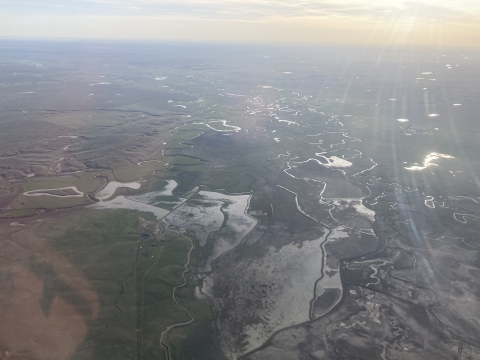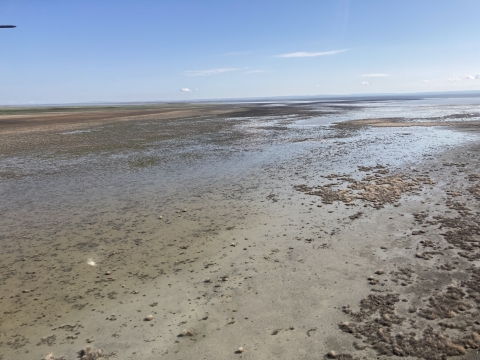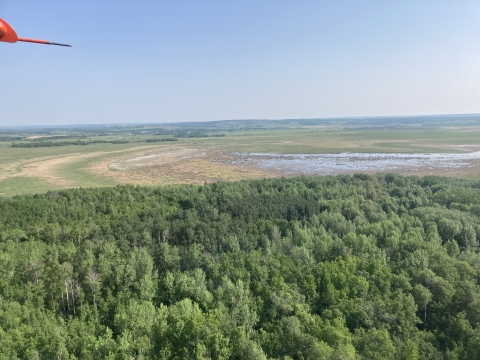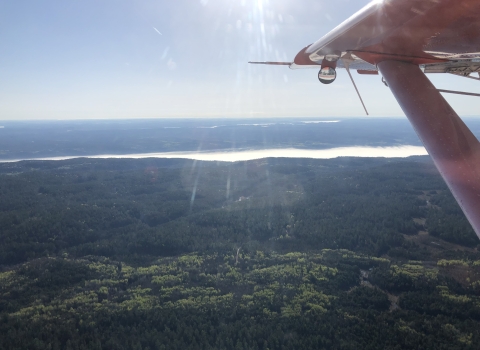My observer, Joe Sands, and I arrived in Havre, Montana, at the end of April to start this year’s waterfowl survey. We spent the first day looking at habitat conditions, investigating the species composition and the breeding phenology of waterfowl. After our drive and examination of wetlands, we determined the timing was right to start the survey as all species were present and we had nearly a 1:1 ratio of mallard drakes to pairs. If there are too few single mallard drakes compared to pairs, we were too late and if there are too few, we were too early. On our first flight, we noticed immediately how much wetter conditions were compared to last year in Montana north of the Missouri River. Many of the natural wetlands across the area were full, stock ponds were more than 80% of capacity, and there were many temporary wetlands present. Snow and rain occurred throughout the winter and spring providing much needed precipitation and breaking the drought conditions we had observed in the area since 2021. In the area around Havre, conditions were excellent with nearly all natural wetlands and stock ponds at or over capacity. The excellent habitat conditions attracted more birds than we typically see there – especially northern pintail.
The good habitat conditions continued as we moved north into southeast Alberta where annual precipitation was normal for the year. Consequently, we counted many more wetlands and waterfowl in the areas southeast of Lethbridge than we had in the past couple years. Pakowki Lake, although not full, finally had some water and birds to count! Last year, Pakowki Lake was almost dry and I don’t think we counted one bird in that entire stretch of habitat. Habitat to the southwest of Lethbridge was considered to be fair, as the area was abnormally dry but still contained a decent number of wetlands overall.
Habitat conditions deteriorated north of Lethbridge as much of the area is experiencing moderate to severe drought. Many of the wetlands are dry or at half of their capacity, leaving large “bath tub” rings of mud around them limiting the availability of nesting cover for ducks. Because the number of wetlands is low, suitable nesting and rearing wetlands are crowded with high densities of birds making counting challenging at times. Drought conditions persisted north of Calgary with the worst found north and east of Red Deer where our ground crew counted the lowest number of ducks since 2010. We also found abnormally dry habitat in the Edmonton, Lloydminster, and Cold Lake regions. Permanent wetlands were low with many below 50% of capacity. In the parklands and prairie habitat near Grand Prairie and Peace River, conditions improved somewhat with the significant precipitation the area received in mid-May. However, this area has been in a moderate drought and therefore, the habitat is just considered to be fair despite a few good spots.
It was a great survey and thanks to our Canadian Wildlife Service partners for their hard work on the ground collecting the data needed to correct our visual estimates and to Joe Sands for making my job easier and for being a great traveling partner. See you next year!









